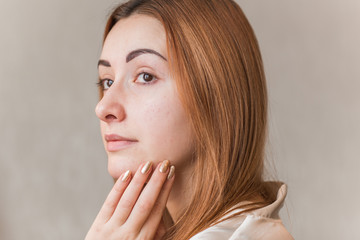Acne
Which facial wash or cleanser should I use?
The majority of washes available without a prescription contain one of the two following ingredients: benzoyl peroxide (PanOxyl 4%, Clean & Clear Continuous Control Acne Cleanser, OXY Acne Wash, Maximum Strength, Proactiv) or salicylic acid (Neutrogena Oil-Free Acne Wash Salicylic Acid Acne Treatment, Clean & Clear Blackhead Clearing Scrub). You can use these twice daily, but since some of the other prescription medications that may be prescribed have the potential to cause irritation, we recommend using these acne cleansers once daily (usually in the shower in the morning) then using a mild cleanser with good moisturizing properties, such as Vanicream Facial Cleanser, in the evening. Benzoyl-peroxide wash can bleach clothing and towels, so use this once daily in the shower only and rinse thoroughly. The best is PanOxyl 4% Creamy Wash. Allergic reactions have been reported, so stop immediately if facial swelling occurs.
1. Wash your face gently twice daily with a mild soap or cleanser. No scrub brushes, buff puffs or rough wash cloths. Pat dry.
2. Avoid moisturizers unless needed for dry patches. Use only those labeled “non-comedogenic” which means non acne-causing.
3. Do not pick, squeeze, or scratch acne lesions.This can lead to longer healing time, skin infection and scarring.
4. Consider purchasing a Foreo facial cleanser. These mechanical hand-held devices decrease clogged pores and are helpful in exfoliating dead skin cells and can also help with make-up removal.
5. Foundation or make-up should be “non-comedogenic” and water based. Always apply prescription medications or lotions first, allow dry time, and then apply make-up. Powder make-up products are generally better than creams or gels.
Your physician may have prescribed some the following medications:
Retinoid cream (tretinoin also known as “Retin-A” creams)
After washing your face at bedtime, pat dry and apply a small amount of retinoid cream to your entire face. Start with a single pea sized dab and spread this evenly over your forehead, cheeks and chin. Gradually, over the course of several months, you will increase the amount that you are applying to approximately three pea-sized dabs. The amount will vary between people. This medication is not for women who are pregnant or trying to become pregnant. If you develop no redness, peeling, or flaking then gradually increase the amount you are applying. A slight amount of redness, peeling, or flaking occurs in everybody and indicates the medication is working. However, if your skin becomes too irritated decrease the amount. Retinoid creams need around three months of use to see effects, so stick with it! Do not stop because you think it is making your acne worse. Apply to entire face, not just to spots. Retinoids work by preventing new spots from forming, not by making existing spots go away.
Antibiotic-containing solution
Apply to all affected areas in the morning. If you are having a flare, you may use this twice daily. Allow some time (5-10 minutes) to pass after the Retinoid cream application before applying this product in the evening.
Antibiotic by mouth
This is reserved for severe acne that has not responded to other treatment. Doxycyline, cephalexin, or clindamycin are used. Importantly, tretinoin should be continued during treatment. Course duration varies, but it is important to stop after a defined period of time and re-evaluate the need for the medication. A follow-up visit will be made to facilitate this.





